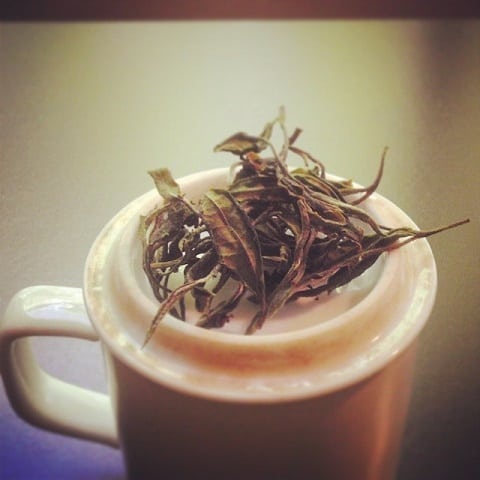This all started a year ago, and it’s all Greg’s fault.
By “a year ago”, I literally mean a year ago! Like, last August. And by “Greg”, I mean the dude behind Norbu Tea. One fateful day, in August of 2013, I noticed he had retweeted something interesting.

Alas, I’d seen the update too late. They’d sold out of that batch of Japanese white tea in less than two months. I even wrote about said lament in an article on Taiwanese white tea. However, they did encourage me to check back in a year – when the new harvest came in.
And wait, I did. Like some kind of deranged tea stalker.

Over the course of the year, I checked the site at least once a week. Hitting refresh a few times before moving on. That fierce determination lulled a bit in the spring months, but this last July…all that stalking paid off. A new batch had come in! Same location, same growing months, different cultivar.
For those not in the tea “know”, the Japanese don’t usually deviate from producing green tea. In recent years, that’s been a-changin’ – what with increased production in Japanese black tea, oolong, and in some cases, heicha. All that said, white tea was still undiscovered territory.
The farmer that devised this stuff hails from Gokase Town, Nishiusuki District, Miyazaki Prefecture, Kyushu, Japan. Say that five times fast. The region has had a healthy history of tea experimentation, particularly in oolong production. White tea, though, was a new venture. The farmer(s?) in question had only been at this style for two or three years.
The cultivar utilized for this batch was 100% Kanayamidori. From what I could find, it was registered in 1970 (source: My Japanese Green Tea), and is best known for producing very fragrant leaves. Ideal picking occurring in early-to-mid-May. The product I chose to buy was plucked around May 9th, and – according to Yuuki-Cha – was notably sweeter than later plucks. They had me at “sweet”.
Unlike Chinese white teas, these leaves were mostly un-tampered with. Plucked, withered and dried; no rolling that I could see, or at least not much. That and none of the leaves were “downy furs” young. They were youthful, yes, but more like toddlers in the leafy scheme of things. In appearance, they reminded me of Taiwanese white teas I’d tried. If I were a “Lay” tea person, I’d think these looked like lawn shavings. The aroma, though, would’ve dispelled that . It was note-for-note like Arya Pearl – a Darjeeling white of similar aesthetics – spicy on the nose with a grassy bend.

There weren’t any brewing instructions to go by on the Yuuki-Cha page, so I had to work with prior white tea knowledge on this. I went with roughly 170F-ish water and a three minute steep – roughly 1 tsp. of leaves in a 6oz. steeper cup. It worked for everything on the light end of the tea spectrum.
The liquor brewed a bold (if pale) yellow with an aroma of straight…well…sweetness. Not like a flavored tea, more like a fruit of some sort, but I’d be hard-pressed to narrow it down. It was just fruit-sweet on the nose. Same with the taste; first sip and I was whistling. This was perhaps the sweetest white tea I’ve come across since an Ali Shan Taiwanese white, or a Makaibari Silver Tips. Nothing about this outright screamed, “Nippon!”, save for a smidge of nuttiness on the aftertaste.

In baser terms, it was like a Taiwanese white tea seduced a Darjeeling white in a pachinko parlor, skipped town, and was greeted a year later with a bouncing baby Kanayamidori at its doorstep.
Worth the year-long wait? I’d say, “Mostly yes.”

